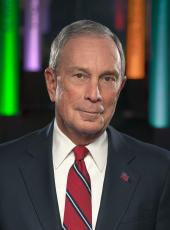A mishmash of solar energy policies throughout the country has led to an uneven distribution of installed solar capacity when correlated against the places that receive the most days of sunlight each year.

Source: EIA
In the above map, red indicates the highest potential for solar power based on the amount of sunlight. The yellow dots represent installed solar plants, not including residential rooftop solar.
California has long been a leader in promoting solar policy, and they have five times as much solar installed as the next state. They have aggressive policies requiring utilities to use renewable energy, giving homeowners and building owners strong incentives to install solar on rooftops, and even requiring that new homes be built with solar.
The state with the next-most solar is North Carolina, which might surprise people. It's substantially less sunny than not only California, but also Arizona, New Mexico and Texas, not to mention it's sunnier neighbors to the south. But the proliferation of solar in North Carolina is mostly due to strong rules requiring utilities in the state to use clean energy.
The impact of policy is even clearer if you look at the Northeast, which has more solar energy installed than lots of places with much more sun. New Jersey and Massachusetts are in the top 10 states for installed solar power, and they have the best solar policies in the country. Rhode Island, Connecticut, Maryland, and D.C. also have great solar policies — and you can see from the map that it's working.
The Midwest tells the same story: it clearly has more solar power than any of its neighbors, and indeed, its clean energy policies are the strongest.
We can expect to see solar spread much more widely in the coming years. Costs associated with solar have dropped dramatically, and we've seen utilities, even in more conservative and coal-friendly regions like Indiana, choose solar and wind over gas and coal just based on lowering bills for their customers.
Mike's climate plans include a range of tools to encourage utilities to move to clean energy even faster, including helping states adopt better policies. His goal is for the nation's electric grid to be 80% powered by clean energy by the end of his second term.
Michael Bloomberg, Bloomberg Campaign Press Release - Bringing the Data: The Sun Shines on Solar Online by Gerhard Peters and John T. Woolley, The American Presidency Project https://www.presidency.ucsb.edu/node/365742

